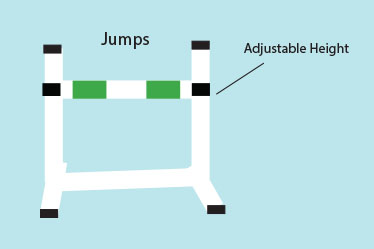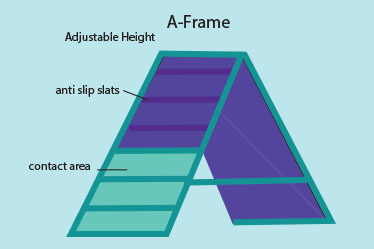Agility Equipment Explained

Tunnel
Tunnel obstacles are not meant to test your dog’s speed
or skill so much as their confidence, they have to work out
how to exit it, and continue to do so without turning
around to go back out through the entrance,
all while they cannot see where they are going.
The intention of the tunnel in dog agility is to improve
your dog’s confidence and ability, their willingness to follow
commands, even when they cannot directly see you.

Jumps
These small, colourful fences are constructed of two bases, called stands or wings, with further horizontal poles supported by them, which can be adjusted to various different heights. Jumps are useful for building your pet’s stamina and fitness, as well as increasing their musculature and flexibility as they progress. They also help your dogs to develop control and coordination on the fly, as the idea is that the dog leaps the fence without dislodging any of the poles!

Weave Poles
Weaving poles involves a straight course of flexible poles
spaced out at set distances for dogs to weave through.
The ideas is that your dog uses the poles to weave back
and forth through in one direction.
This type of agility work is designed to improve the
dog’s running speed, cornering skills and
accuracy at high speeds, making your dog think about
what they are doing while also maintaining a rapid pace as they weave in and out the poles.

Tyre Jump
Hoop or tyre jumps are a more complex form of jumping obstacle.
The tyre is suspended off the ground at variable heights, and the intention is that
your dog should jump through the hoop without making contact with it.
These obstacles help to teach your dog precision, control and how to pace
themselves in order to execute a good jump, as well as contributing to
flexibility and muscle tone too.

A-Frame
The A frame is probably one of the most easily identifyable pieces of the contact equipment.
The bottom sections are lighter coloured, these are the contact areas.
Contact areas are where
your dog must place their feet when using the equipment, it’s the focus of the training using
the contact equipment.
Teaching ‘two on, two off’ is a common technique to slow down very speedy dogs to
allow you as handler to catch up

See-Saw
The see-saw is a flat plank that is suspended at the middle to tip either way. Dogs should step onto the plank on the first contact point, move along until the plank tilts over to the other end, and not come off the obstacle until the second contact point and with the end of the plank on the ground. These obstacles are designed to test your dog’s balance, accuracy and self-control, as they force the dog to slow down and stay on point in the middle of an exciting, high-speed round.

Dog Walk
The Dog Walk is a large piece of agility equipment. There is an upward ramp, then a long straight plank, then a downward ramp. On the upward and downward ramp there is a yellow area .. this is the 'contact' area. To complete the Dog Walk correctly a dog needs to run up the ramp touching the yellow contact area, then go up and along the top plank and down the other side, touch the yellow contact point on the downside.

Contact Trainer
The contact trainer is a smaller and lower cross between a dog walk and
A-frame but at a much lower level. A narrow plank like the dog walk on one side and wider A-Frame like side on the other.
It’s designed to be used to practice contact work and build up your dog’s confidence at a lower more secure level before they start using the A-frame and Dog Walk equipment.

Dog
Ok so not equipment but your dog is not only a vital component in learning Dog Agility but the whole point of coming to a dog agility class. The training you will learn and the exercises you do together will strengthen your bond and communication and lead to a healthier and happier dog and owner. The classes are a fun way to spend time with your furry friend and lead to better dog behaviour overall.

